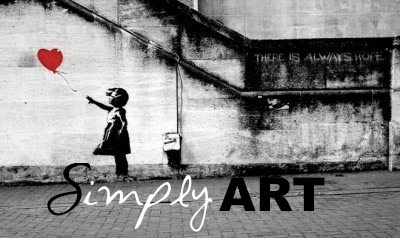
Governments, politicians and people in power have often used art as a weapon in order to pass a message and fulfill their political objectives. Building art into a political weapon is not a new practice. It has been lingering on the line of art history since its beginning. Kings would have portraits made of them and sent by diplomats as a political message, filled with symbols and messages in order to establish relations. Governments in the 20th century, specially the Communist and the Fascist one would restrict their artists to create works of art that supported the party’s ideals. For example, Kasimir Malevich saw his very abstract art restricted and censored by the USRR because it didn’t show the soviet people at work and the prowess of its people and leader. For the American government of the 50’s and 60’s, the artistic movement of Abstract Expressionism was a way of showing the world the freedom of thought that the country had. The degree of deep internal abstract expression was a way of comparing themselves to the rigid control the USSR had on its people. Their art was a symbol of democracy and freedom that the American government didn’t miss a chance of using. Indeed they used it as the ideal comparison so that they appeared better than the soviet government who censured its artist into a figurative and partisan art. Nowadays, governments keep using art as a strength in order to pass a message.
The Venezuelan government just found itself supporting graffiti and street artists who blatantly show the opposition to American government and their empire-like control over the world. Caracas’s Ministry of Commune is now creating and supporting groups of street artists such as Guerrilla Communications which give stencil and graffiti workshops all around the city. Others, like Communications Liberation Army, operate somewhat autonomously but still get material like spray paint from the government. Mr. Chavez’s policy is to endorse graffiti artists who support his revolution and his demonization of the American government. For the people walking on the streets, all these graffitis work just as advertisements work for consumerism, they push you to adhere to a certain belief and behavior.

If we compare two works, one from the XVI century and one from the XXI, we’ll see that in that particular aspect, art follows a certain pattern, it keeps serving the same purpose, no matter the cause, the aesthetical style or the materials used. Art has a legacy itself, that of passing a message, that of being a symbol. That is why politicians have used very often in history. The first piece is a painting of the English King, Henry VIII by Hans Holbein, a German painter established in London. In this painting we see that the painter depicts the king with a distorted figure, making it look much bigger than normal so that he looks more menacing and imposing. The facial expression is that of someone who is serious, who is there for important business and doesn’t want to waste his time. Finally, his clothes, rich and covered with jewellery and bright colors give the sense of a rich and powerful man. The presence of the gloves and the sword present the king as someone who is diplomatic and a gentleman, but nevertheless capable of going to war if the occasion requires him to. Overall, this image passes the message onto the receiving diplomat that the King is not to be joked with and that if things get sour, he would be ready to go to war. The painting constitutes a political message. A few hundred years later, in Caracas, we have the work of Carlos Zerpa, a member of the Communications Liberations Army, melted onto the walls of the busy city. In his graffiti representing Caravaggio’s David having cut Hilary Clinton’s head instead of the giant Goliath, M. Zerpa fills also a political role for his government by criticizing the American Secretary of State. This work of art, just like Holbein’s, is supported by its government because it fulfills a role of sending a message, a political and ideological one. As the artist himself put it, “It’s a metaphor for an empire that is being defeated”.
Though centuries and miles apart, Holbein and Zerpa twisted art in order to fulfill the same purpose, that of which making it serve as a political symbol in order to pass a message. This comparison, I hope, illustrated that Art, even though it suffers a lot of different movements and conflicts, some things stay elementary to it, no matter the time or place.

No comments:
Post a Comment